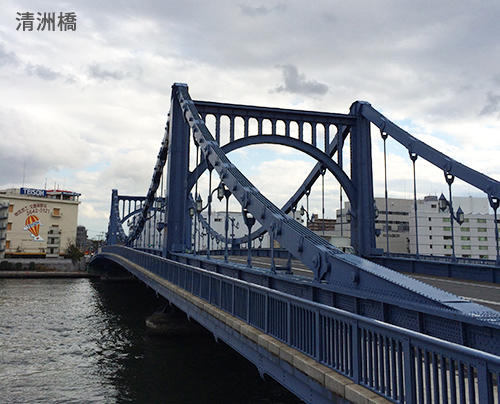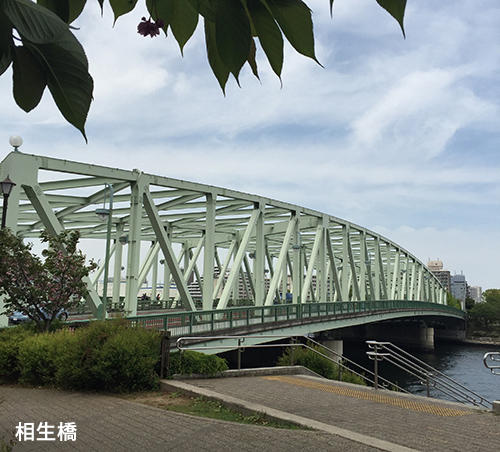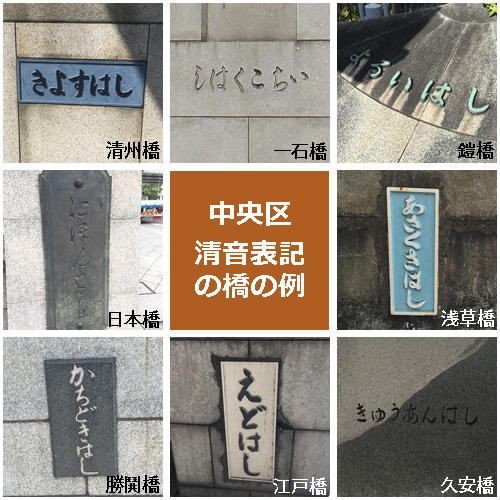Chuo-ku, Tokyo is the second largest in the 23 wards (minimum is Taito-ku), the second largest from the bottom. Although it is such a small area, including bridges that span the Sumida River, Kanda River, Nihonbashi River, Kamejima River, canals, etc. that flow through the ward, bridges that remain at places that have been reclaimed and become capital expressways and ward roads, etc. There are more than 70 bridges.
I have loved "bridges" for some reason since I was a child, and no matter where I go, I want to cross and I can't stand it. When I was a junior high school student, my research topic for summer vacation was "bridge investigation" of Arakawa flowing through Saitama Prefecture and its tributaries, and the name of the company I made with my friends in Saudi Arabia is "○○○ bridge". A few years ago, when someone who sees the past and the future saw my ancestors' profession, I was told that he was a craftsman who designed and built bridges.
Well, it's a good time. As for the name of the bridge, in many cases one of the main pillars of the bridge is written in kanji and the other is written in kana. In the case of Nihonbashi, "Nihonbashi" and "Nihonhashi". That's not "Nihonbashi" but "Nihonbashi". It's not a muddy sound. If you go to another bridge, Edobashi is "Edohashi" and armor bridge is "Yoroihashi". The main pillar of Kyobashi, which still remains, is "Kiyauhashi", and the shipping bridge is "Kaiuhashi". You can see Shinohashi and Harumi Ohashi.
There was a reason for this. It is said that the person who built the bridge carved the letters with the wishes and prayers of the people so that the flow of the river flowing below would not be clear and cloudy forever. Of course, bridges that have been replaced or newly built, such as "Kayaba Bridge" and "Aioi Bridge", also have muddy notation, but when examined, all old bridges were written in Kiyone.
The name of the bridge was also filled with people's prayers and wishes.




